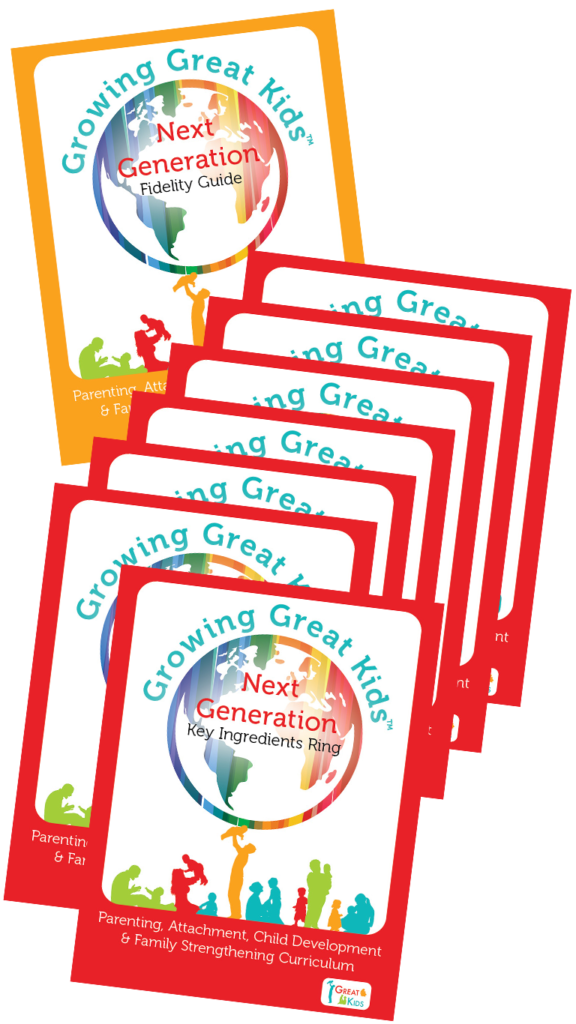Have you noticed all the GGK resources related to preventing exposure to second and third hand smoke? GGK is designed to provide program families plenty of opportunities to learn about many health care related topics, including the health effects of second and third hand smoke. It is important for parents to be able to make informed decisions about their family’s health. Today, we will discuss some research-based information about secondhand smoke and the effects on developing pre-birth babies, infants and young children. We will also spotlight some of the GGK tools and resources along with practical tips and recommendations from the experts.
Let’s start our discussion by reviewing the definitions of second and third hand smoke. According to the Centers for Disease Control, secondhand smoke is defined as the smoke exhaled or breathed out, by a person smoking tobacco products, such as cigarettes, pipes, or cigars. The tobacco smoke contains more than 7,000 chemicals, hundreds of them considered toxic, and about 70 that are known to cause cancer (Centers for Disease Control, 2016).
Dr. Lowell Dale from the Mayo Clinic and Professor of Medicine in Rochester, MN states that third hand smoke is generally considered to be residual nicotine and other chemicals left on a variety of indoor surfaces by tobacco smoke including that which clings to hair, skin, clothes, furniture, drapes, walls, bedding, carpets, dusts, and many other surfaces. He indicates that the mix of third hand smoke contains cancer-causing substances, posing a potential hazard to nonsmokers who are exposed to it, especially children. He also points out that third hand smoke is a relatively new concept, and researchers are still studying its possible dangers (Mayo Clinic, 2014)
In part because second hand smoke is more obvious, there is greater buy in about the adverse impacts of exposure. Many families seem to be aware that smoking inside when children are present is harmful. The effects of Third hand smoke exposure, however, has not yet gained the same degree of awareness.
Research indicates that, statistically, low-income populations have are less likely to have total home smoking bans when compared to their wealthier counterparts (Acuff, Fristoe, Hamblen, Smith, & Chen, 2016). When it comes to smoke-free policies, one of the biggest problems seems to be in perception. One study found that most of the participants were not familiar with the information about the effects of third hand smoke, but after it was discussed with them most agreed that the message would motivate them to make their homes smoke-free (Escoffery, et al., 2013)
Let’s do a bit more exploration around how exposure to tobacco smoke, either second or third hand, can harm developing babies, infants and children.
The Developing Baby and Smoke
Exposure to smoke during pregnancy can negatively impact the growth and development of the fetus as well as the child’s future health and behavior. Poor developmental and psychological outcomes can include miscarriage, premature birth, reduced birth weight, and increased risk for diseases and behavioral disorders later in life such as learning problems and attention-deficit/hyperactivity disorder (Grigorenko et al., 2012).
Infants/Children and Smoke
Infants and children exposed to secondhand smoke are at higher risk of serious health problems both short and long term. Secondhand exposure is connected to respiratory diseases and asthma, low birth weight, sudden infant death syndrome (SIDS), cognitive impairments such as reading and math deficits, behavioral problems such as hyperactivity, aggression, depression, and other conduct disorders, bronchitis, pneumonia, middle ear infections, and other diseases (American for Nonsmoker’s Rights, 2009).
The Growing Great Kids Curriculum is specifically designed to present research-based information in simple, easy, and understandable ways. Here are some examples of the topics and handouts related to preventing second and third hand smoke exposure. Check them out today and share them you’re your program families!
GGK Prenatal: Smoking and Fetal Development
GGK 4-6 Months: Smoking: Facts About Exposing Children
GGK 10-12 Months: Smoking Revisited. Is Your Baby a Second or Third Hand Smoker?
Let’s wrap up with reviewing a few tips for parents from The American Academy of Pediatrics (HealthyChildren.org, 2015)
- Do not smoke near your children, or your pets
- Make your home and car smoke free
- Remove your children from places where smoking is allowed
- Choose a babysitter who does not smoke
- Encourage tobacco-free child care and schools
- And last but not least… talk to your child’s pediatrician about ways to keep your child healthy in regard to tobacco exposure.
We are all at risk of being exposed to secondhand smoke when we go to restaurants, sports events, parks, concerts, and even family or friends’ gatherings. While eliminating 100% of children’s exposure to second and third hand smoke might be impossible, parents appreciate receiving information that will support them in making “best choices” for their children. You have some great GGK tools and resources for guiding these conversations around this topic!
Works Cited:
Acuff, L., Fristoe, K., Hamblen, J., Smith, M., & Chen, J. (2016). Third hand smoke: Old smoke, new concerns. Journal of Community Health, 680-687.
The Centers for Disease Control and Prevention (2016). Smoking and Tobacco Use. Secondhand Smoke Facts. Retrieved from http://www.cdc.gov/tobacco/data_statistics/fact_sheets/secondhand_smoke/general_facts
Escoffery, C., Bundy, L., Carvalho, M., Yembra, D., Haardorfer, R., Berg, C., & Kegler, M. (2013). Third hand smoke as a potential intervention message for promoting smoke free homes in low income communities. Health Education Research, 923-930.
The Mayo Clinic (July 10, 2014). Healthy Lifestyle Adult Health: What Is Third Hand Smoke? And Why Is It a Concern? Answers from Dr. Lowell Dale. Retrieved from http://www.mayoclinic.org/healthy-lifestyle/adult-health/expert-answers/third-hand-smoke/faq-20057791
Grigorenko, E. L., Cicchetti, D., Knopik, V. S., Maccani, M. A., Francazio, S., & McGeary, J. E. (2012). The epigenetics of maternal cigarette smoking during pregnancy and effects on child development. Development and Psychopathology, 24(4), 1377-90. Retrieved from http://dx.doi.org/10.1017/S0954579412000776
Americans for Nonsmoker’s Rights (2009). Health Effects of Secondhand Smoke on Children. Retrieved from www.no-smoke.org
HealthyChildren.org (October 20, 2015). Health Issues: The Dangers of Secondhand Smoke. Retrieved from https://www.healthychildren.org/health-issues/conditions/tobacco

